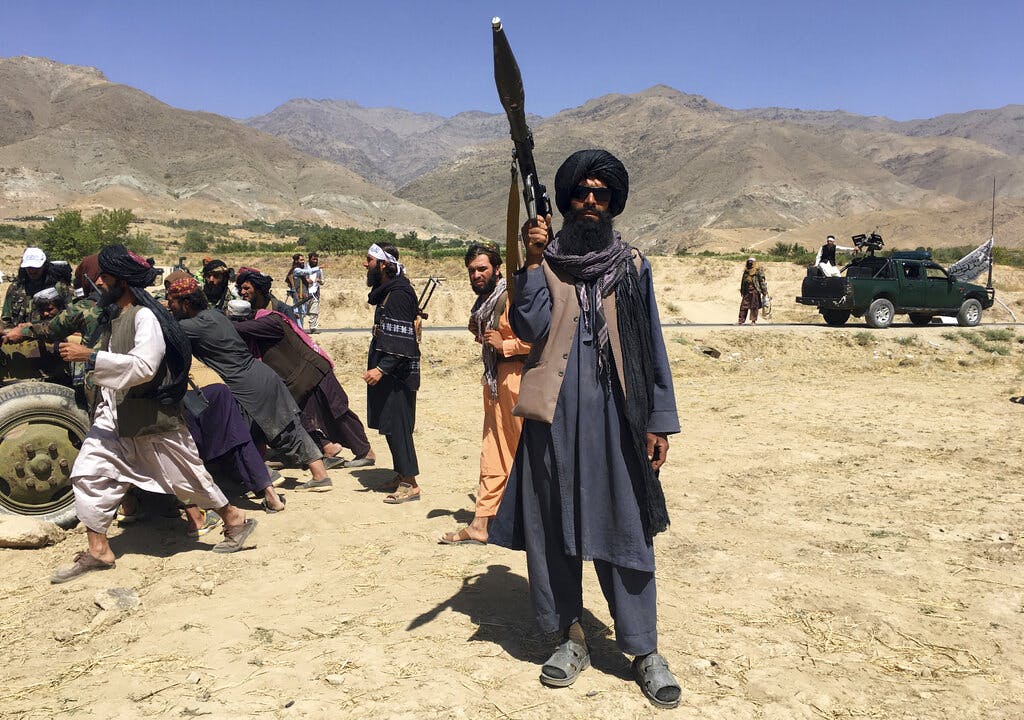National Resistance Front Retreats After Offensive Fails To Capture Districts in Northeast Afghanistan
A representative of the NRF says the group plans to wage ‘an unconventional war’ against the Taliban.

The Afghan National Resistance Front, after fierce fighting that “achieved some initial success” but failed to liberate districts in Northeast Afghanistan, will wheel on the Taliban in a long fight with unconventional tactics.
That is the outlook of a researcher at the Institute for the Study of War, Peter Mills, in an interview Wednesday with The New York Sun. He reports that the NRF “achieved some initial success” in the offensive it launched late last week, but fell short after the Taliban shifted reinforcements to the region.
A NRF representative, Ali Nazary, declined to view the outcome of the offensive as a setback. He is head of foreign affairs for the group led by the son of Ahmad Shah Massoud, the “Lion of Panjshir” who was killed by the Taliban in 2001. He says the NRF plans now to wage “an unconventional war” against the Taliban.
While the NRF had at first captured territory across several provinces in the offensive, Mr. Mills said, the group met with a “strong Taliban response.”
As a result the NRF was not able to seize the district centers — local administrative hubs — in the fighting, hindering the group’s ability to retain control in the areas where it had made gains.
The outcome underscores the challenges faced by the NRF in the short term, Mr. Mills explained, but he noted that the long-term prospects of the organization could prove brighter. That, he said, would depend on its ability to unite Afghanistan’s disparate anti-Taliban opposition, the availability of foreign support, and the Taliban’s own ability to maintain control of the fractious country.
The NRF spokesman seems to be striving to make the best of the situation. On Friday, Mr. Nazary had said the group had “liberated three districts” in the Panjshir province as part of a broad offensive in the country’s Northeast. “We are taking back our country,” he said then.
Yesterday, though, Mr. Nazary articulated a narrower goal, saying the point of the offensive was “taking as many resources as we can from the enemy,” in a kind of asymmetric warfare. He said the group aims to “attack, take what we can, then return to our bases,” in an effort to “exhaust” its opponents.
Indeed, the NRF’s recent offensive prompted the Taliban regime to send reinforcements and some of its top military officials to the theater of combat, Mr. Mills explained, which shows “they do take this as a serious threat” and intend to allocate military resources accordingly.
Among the prominent officials Mr. Mills said have been sent to the Northeast region amid the NRF attacks were the Afghan deputy defense minister, Fazil Mazlum, and the deputy chief of staff of the military, Mali Khan. In addition, the Taliban sent thousands of its troops to the region to parry the NRF offensive.
The NRF now appears to have “retreated to their mountain strongholds,” Mr. Mills said. In the aftermath of their offensive, he observed that the Taliban had launched reprisals against Afghan civilians believed to be supporting the NRF, including the torture of individuals and “burning houses of families affiliated” with the group.
Mr. Nazary also reported one of the NRF’s commanders — “Sher Ahmad from Banu, Andarab” — was killed Tuesday during fighting with the Taliban.
The results of the offensive are “more or less in line with what we’d expect,” Mr. Mills said, noting that the NRF appeared capable of maintaining an “insurgency” in the region, but faced hurdles if it sought to achieve more ambitious goals.
These hurdles include a lack of material support from nations surrounding Afghanistan, Mr. Mills said, noting the NRF doesn’t “have a good degree of foreign support.” That is partly because neighboring countries want to do business with Afghanistan, behooving them to stay on good terms with the Taliban regime. “Most of the neighboring states are giving the Taliban a chance,” he said.
The lack of a unified domestic opposition to the Taliban is another factor limiting the NRF’s progress, Mr. Mills observed, though he noted “that could change” if opposition groups were to form “a grand coalition.” Doing so, he said, “could present a much more serious threat to the Taliban.”
The Taliban’s broad unpopularity in Afghanistan — in part due to its repressive governance — and the militant Islamic group’s difficulty maintaining security across the country were also variables that could help the NRF in the long term, Mr. Mills said.
He noted that the Taliban were “struggling to manage the security situation,” as made clear by recent attacks by the terrorist group Islamic State Khorasan Province. The security challenge has left the Taliban “stretched in many directions,” Mr. Mills said, and as a result, they “will struggle to maintain enough force to suppress groups like the NRF.”
The NRF’s base of support is currently centered in Northeast Afghanistan, Mr. Mills noted, roughly corresponding with the area once controlled by the anti-Taliban Northern Alliance. It is “an area the Taliban never really controlled until August 2021,” he said.
Yet Mr. Mills explained, “that’s just one part of the country,” and if the NRF wants to expand beyond it, “they will first need to secure and eject the Taliban from that area.”
Meanwhile, the NRF, Mr. Nazary said, was prepared to wage a guerrilla-style war against the Taliban, pointing to the successful example of Afghanistan’s anti-Soviet fighters in the 1980s.
Mr. Nazary added that just as “some Afghanistan experts” had made a “wrong assessment” as to whether the Taliban would take power in 2021, many “experts” were underestimating the NRF today.

